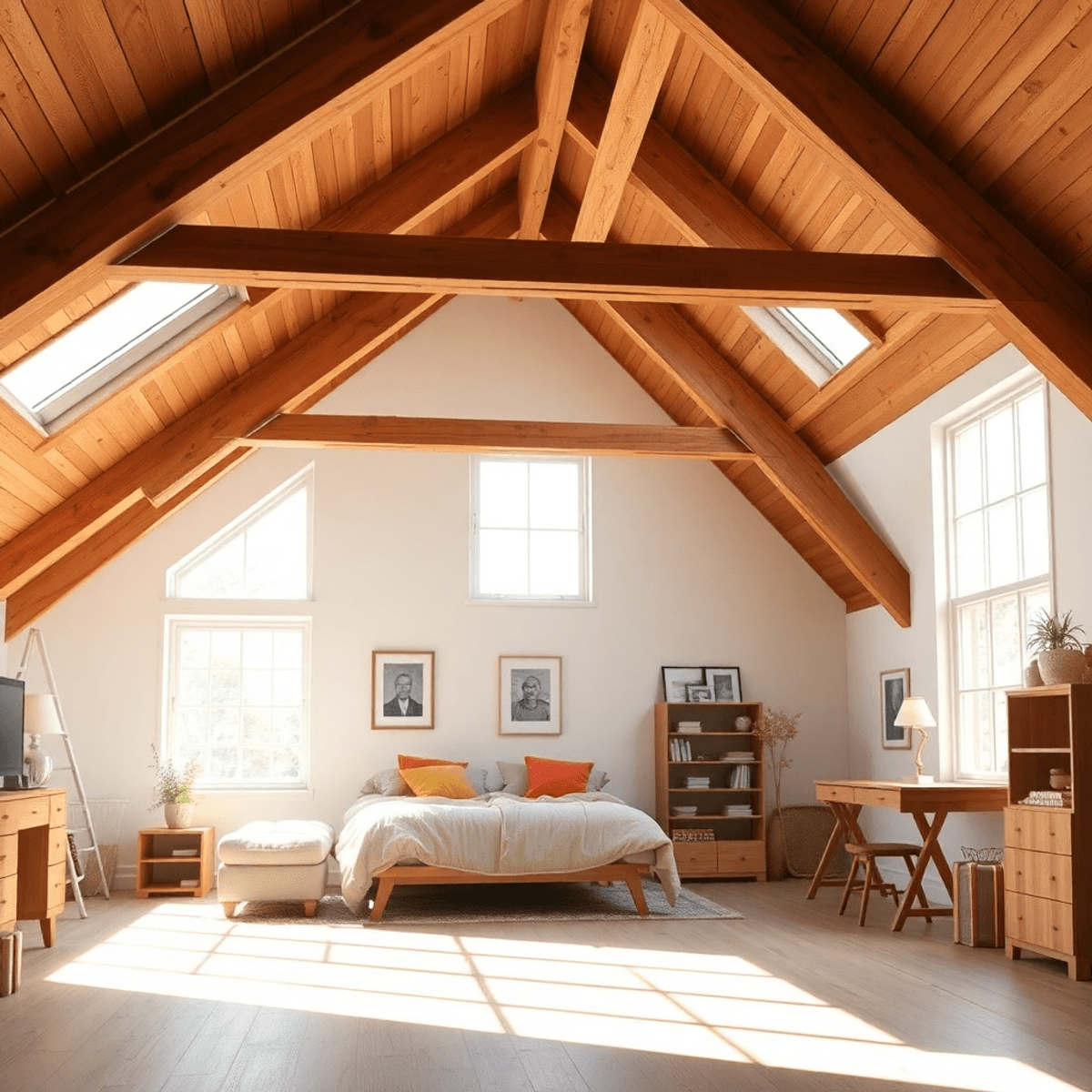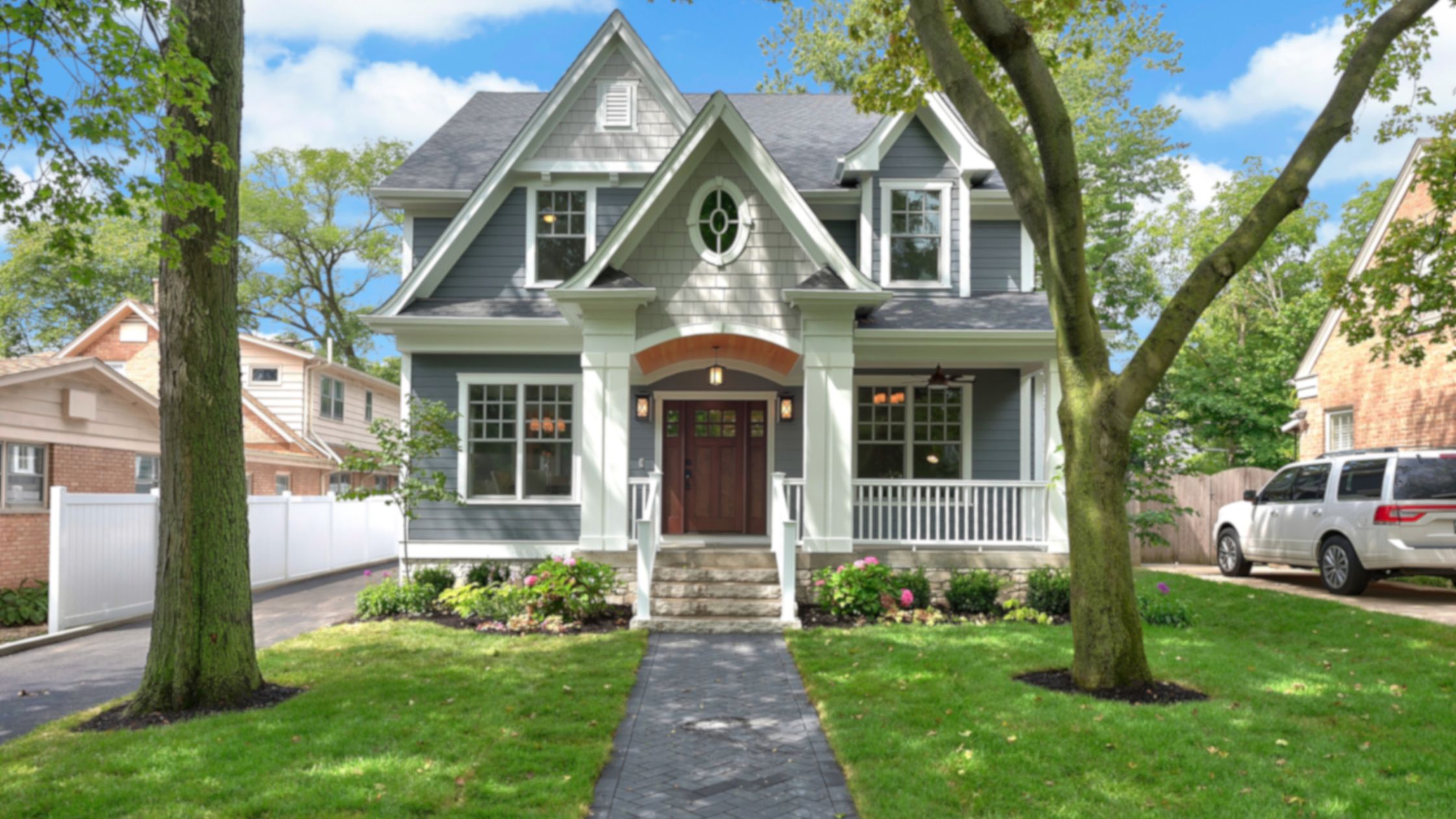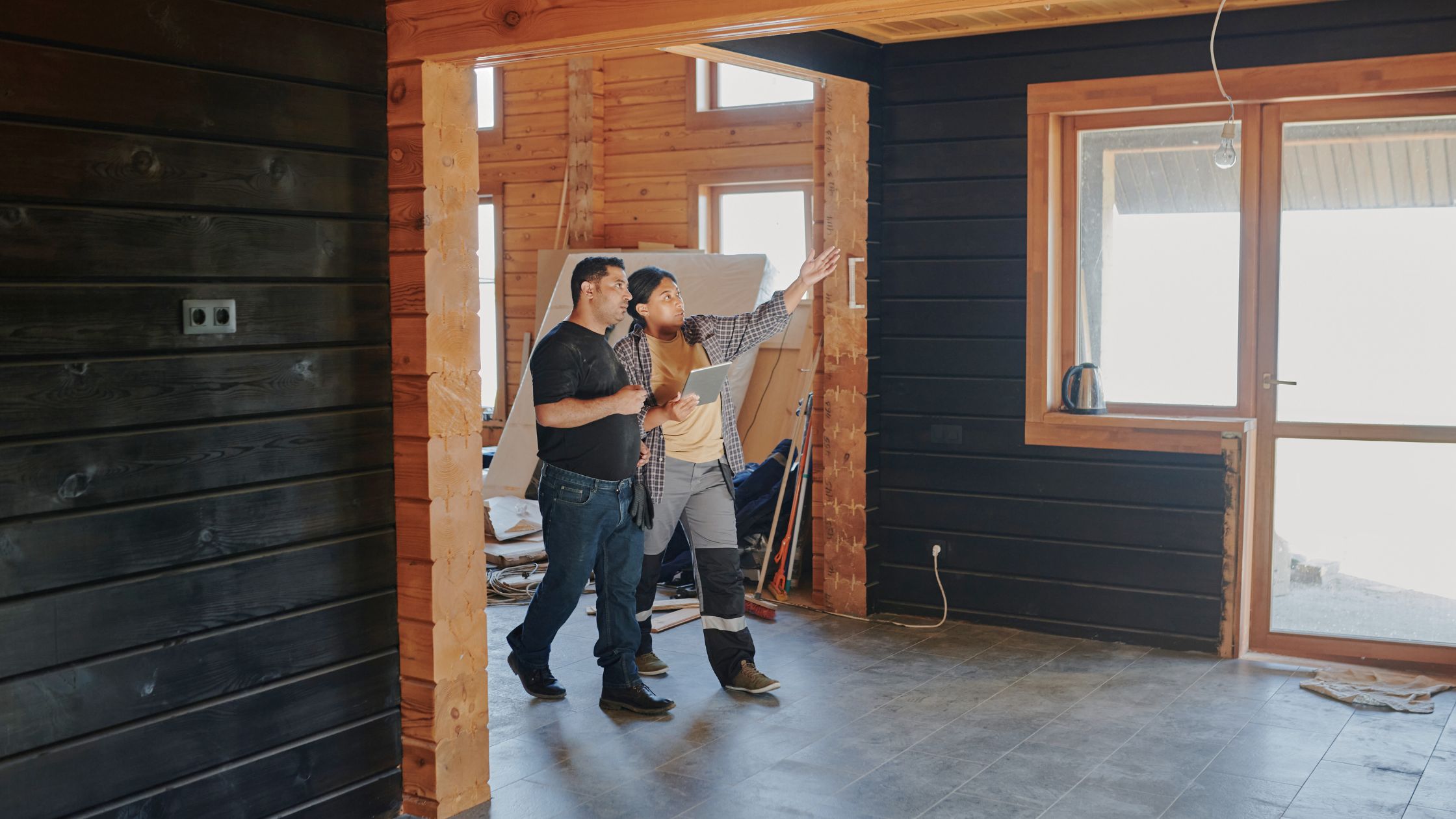Attic Conversion 101: Turning Your Illinois Attic into a Functional Living Space
The journey of attic conversion in Illinois begins with a common yet impactful trend—transforming an underused attic into valuable square footage. Many homeowners are recognizing the potential of their attics, using these spaces to create:
- Additional bedrooms for growing families or guests
- Home offices to support remote work and study needs
- Accessory Dwelling Units (ADUs) for rental income or multigenerational living
Attic conversion Illinois projects not only offer flexibility but also boost property value and deliver much-needed functional living space without extending your home’s footprint.
However, before embarking on this transformative journey, it’s crucial to navigate Illinois’ local building codes and regulations. These rules encompass minimum ceiling heights, floor area, emergency exits, and insulation standards—all of which play a critical role in successful home remodeling Illinois projects. Overlooking these guidelines can lead to costly setbacks.
Moreover, while planning your attic conversion, consider the overall design and functionality of your home. For instance, you might want to explore the option of adding a screened porch or sunroom during your renovation. Each option has its own benefits and customization possibilities that can enhance your living space.
In addition to attic conversions, homeowners often contemplate other renovations such as bathroom remodels in Lindenhurst. Such projects not only improve the aesthetics but also increase the functionality of your home.
Key takeaway: This guide will walk you through every step of converting your attic into a comfortable, compliant living space—addressing design strategies, budget tips, code requirements, and real-world insights specific to Illinois homes. It’s also beneficial to consider sustainable building materials for your renovation projects and be mindful when choosing the best materials for your Illinois renovation.
Understanding Attic Conversion Basics in Illinois
Attic conversion projects in Illinois focus on transforming underutilized attic spaces into practical living areas. The scope can vary, from simple renovations to full-scale additions that create entirely new bedrooms, workspaces, or even independent Accessory Dwelling Units (ADUs).
What Counts as an Attic Conversion?
An attic conversion involves making structural and functional changes to convert raw attic space into a code-compliant, habitable room. Typical upgrades include:
- Reinforcing or replacing joists for greater load-bearing capacity
- Installing insulation and drywall
- Adding electrical wiring and outlets
- Ensuring safe access with stairs or ladders
Popular Uses for Converted Attics
Illinois homeowners frequently choose to repurpose attics for:
- Bedrooms: A private retreat away from the busiest parts of the house
- Home offices: Quiet spaces ideal for remote work
- ADUs: Self-contained units with bathrooms and kitchenettes, often used for rental income or multi-generational living
Illinois Building Codes: Attic Space Requirements
Strict adherence to local building codes is non-negotiable. Key regulations you’ll encounter during an attic conversion include:
- Minimum floor space: At least 70 square feet of usable area is required.
- Ceiling height: At least 7 feet of headroom over half the floor area.
- Headroom minimums: Consistent clearance of 7 feet in any direction for primary paths of travel.
Neglecting these attic space requirements can jeopardize both safety and resale value.
Impact of Conventional Trusses and Importance of Structural Assessment
Conventional attic trusses, especially those found in post-1970s construction, can restrict movement and limit usable space due to their web-like structure. Before starting any project, a professional structural assessment is crucial. Licensed contractors can identify potential obstacles—such as insufficient support or limited headroom—before you commit time and resources. This expert evaluation sets a realistic foundation for your design options and budget planning.
Understanding these attic conversion basics ensures that your vision aligns with Illinois’ regulatory framework while maximizing the potential of your existing home footprint.
Additionally, if you’re considering expanding your living space beyond the attic, kitchen remodeling could be an excellent option. You might also want to explore adding features like a cedar pergola in your backyard or creating a screen house for additional relaxation space. If you encounter any issues such as water damage during these renovations, it’s important to seek professional help for water damage restoration. Also, ensure that all areas of your home including the converted attic are secure by following some essential security tips.
Navigating Local Regulations and Permits for Your Attic Conversion Project
Securing the right permits stands as an essential first step in any Illinois attic conversion. Skipping this process can lead to costly penalties, forced removal of completed work, and major headaches during resale or insurance claims. Every Illinois community enforces its own set of regulations, so contacting your local building department before demolition or construction is a must.
Key Permitting Steps for Illinois Attic Conversions
- Submit Detailed Plans: You’ll need to present architectural drawings and project details that demonstrate compliance with all relevant codes.
- Structural Review: Authorities often require proof that existing framing can support the new use, especially if you’re adding plumbing or heavy fixtures.
- Inspections: Multiple inspections—framing, electrical, insulation, and final approval—are typically required at different stages.
Special Considerations: Chicago ADU Ordinance
For homeowners in Chicago considering an attic ADU (Accessory Dwelling Unit), the city’s specific ordinance introduces unique requirements:
- Safety Codes: Fire-resistant materials, interconnected smoke alarms, and carbon monoxide detectors are non-negotiable.
- Emergency Egress: Every sleeping area must have at least one operable window or door providing a direct exit to the outside.
- Separate Utilities: Some ADUs may require independent utility connections for water, electricity, and gas.
Meeting these rules is critical not only for legal occupancy but also for tenant safety—a driving force behind the Chicago ADU ordinance.
Zoning Laws: Impact on Use and Occupancy
Illinois zoning laws regulate how attics can be used once converted. For example:
- In some suburbs, zoning may prohibit rental units or restrict the number of unrelated occupants in a single residence.
- Rural areas might allow more flexibility but could enforce minimum parking or septic system requirements for new living spaces.
Checking your property’s zoning classification reveals what’s permitted—and what isn’t—before investing time or money.
Insights from Homeowners: Smoother Approval Process
Experienced Illinois homeowners share several tactics for navigating local bureaucracy:
“Having every document ready at your first appointment saves repeat trips—and frustration.”
– Evanston homeowner
- Build rapport with permit office staff; they’re often willing to clarify ambiguous code sections.
- Hire a remodeling contractor familiar with local codes—they tend to catch red flags early. If you’re looking for such a contractor in Wauconda, consider Rohrer Construction.
- Maintain written records of all communications with inspectors and officials.
By staying organized and proactive, you minimize surprises and keep your attic conversion moving forward within legal boundaries.
Additional Resources
If you’re also considering other home improvement projects like a kitchen remodel or finished basement, check out Rohrer Construction’s kitchen remodel portfolio or their insights on finished basements. For more comprehensive guides on home remodeling processes, you can refer to Rohrer Construction’s recent guides.
Designing Your Attic Conversion for Comfort and Functionality
Insulation Strategies for Illinois Attics
Attic design in Illinois demands a strong focus on insulation. The state’s unpredictable winters and humid summers put comfort and energy efficiency to the test. When planning an insulation attic conversion, prioritize:
- Spray foam insulation: Delivers superior air sealing, filling gaps in rafters and joist cavities common to older Illinois homes.
- Blown-in cellulose or fiberglass: Effective for attics with irregular framing or limited access, helping meet required R-values for the region.
- Rigid foam board: Works as a thermal break against exterior walls and ceiling slopes, minimizing heat transfer.
The right insulation material keeps heating and cooling costs manageable while preventing drafts or hot spots. Don’t neglect air sealing around ductwork, electrical penetrations, and attic hatches—small gaps can undermine even the best insulation efforts.
Lighting Solutions that Transform Attic Spaces
Thoughtful lighting is key to functional attic design Illinois homeowners will appreciate. Natural light expands perceived space and brightens low-ceiling areas. Consider:
- Dormers: Add both headroom and daylight, turning cramped corners into usable nooks.
- Skylights: Bring in abundant sunlight but require attention to roof pitch and waterproofing to avoid leaks.
- Recessed LED fixtures: Minimize vertical space usage and provide even illumination without bulky fixtures.
Task lighting near workspaces or reading zones enhances practical use, while accent lighting highlights architectural features like exposed beams or sloped ceilings.
Ventilation: Essential for Air Quality and Moisture Control
Without proper ventilation, attics quickly develop musty odors or mold—issues that undermine any conversion effort. A well-designed attic conversion always includes effective airflow solutions:
- Ridge vents paired with soffit vents: Enable continuous air circulation from eaves to peak.
- Mechanical exhaust fans: Remove excess humidity—critical if bathrooms or kitchenettes are part of your plan.
- Operable windows: Offer natural cross-breezes when weather allows.
Balanced ventilation not only maintains indoor air quality but also preserves your investment by protecting structural elements from excess moisture.
By addressing insulation, lighting, and ventilation together, you lay the groundwork for a comfortable, livable attic suited to Illinois’ climate challenges.
Cost Considerations when Budgeting Your Attic Conversion Project
Attic conversion costs in Illinois can vary widely, often landing between $50 to $150 per square foot. The final figure depends on your attic’s current condition, the desired features, and the complexity of the project. Homeowners who simply finish an attic for use as a basic bedroom or office typically spend on the lower end of this range. Projects involving full bathroom additions, kitchenettes, or the creation of an ADU drive costs higher due to plumbing, electrical needs, and code compliance requirements.
Key Expenses in Your Remodeling Budget:
1. Structural Work
Many Illinois attics require structural modifications for safety and stability. This may include reinforcing floor joists or altering trusses to achieve adequate headroom. Structural assessments by licensed contractors are not optional—expect this stage to account for a notable portion of your budget.
2. Walls and Flooring Installation
Installing new framing, insulation, and drywall is standard. Flooring choices like laminate or vinyl appeal to many homeowners because of their durability and weight-savings compared to traditional hardwoods. These materials also affect both cost per square foot conversion and long-term comfort.
3. Electrical Upgrades
Upgrading electrical systems ensures sufficient outlets, lighting, and modern safety standards. In older homes especially, rewiring may be necessary; this is a significant line item in any remodeling budget attic plan.
4. Plumbing (If Needed)
Adding a bathroom or kitchenette requires rough-in plumbing—one of the costlier aspects of an attic conversion. Proximity to existing plumbing stacks can save money; long pipe runs increase labor and material costs.
5. Heating & Cooling Systems
Illinois’ climate makes efficient heating and cooling non-negotiable for attic conversions. Mini-split ductless systems are popular for their efficiency and ease of installation where traditional ductwork doesn’t reach. Building HVAC requirements should be taken into account during these upgrades.
“When we converted our attic into a guest suite in Naperville, most expenses came down to reinforcing the floor structure and adding a mini-split system,” shares Megan K., a local homeowner. “It was worth every penny during those hot summer months.”
Costs can escalate if your project includes custom built-ins, high-end finishes, or extensive dormer additions for extra space and light. Being upfront with your contractor about your budget helps prevent surprises—detailed quotes help you understand exactly how every dollar is allocated within your project scope.
Smart planning keeps attic conversion costs Illinois homeowners face within reason while ensuring that finished spaces are safe, comfortable, and code-compliant. It’s also essential to consider budgeting strategies that align with these cost considerations to make the most out of your investment.
Additionally, if you’re considering expanding beyond just the attic conversion into outdoor living spaces as part of your overall home improvement project, it’s worth exploring some outdoor living trends which could enhance your home’s value and
Maximizing Space Efficiency with Smart Design Strategies in Your Attic Conversion Project
Transforming an attic with limited square footage into a functional and visually appealing living area hinges on strategic planning and creative design solutions. Illinois homeowners often face the challenge of maximizing small spaces in attics, where every inch counts due to sloped ceilings, structural beams, and restricted headroom.
Lightweight Materials for Practical Elegance
Selecting materials that are both lightweight and durable is crucial. Laminate flooring stands out as a favored choice over traditional hardwood since it reduces weight load while offering impressive durability and a variety of finishes. Engineered wood is another smart alternative—it’s stable, resists warping, and still provides an authentic wood look. When choosing finishes for walls or built-in features, opt for drywall or high-quality plywood instead of heavier plaster or masonry to maintain load limits imposed by older roof structures.
Built-In Storage Solutions: The Secret Weapon
Built-in storage solutions are key to maintaining an organized attic that doesn’t feel cramped. Consider these options:
- Knee-wall cabinets: These custom cabinets tuck neatly under sloped ceilings, converting awkward corners into functional storage for linens, books, or seasonal items.
- Window seats with lift-up storage: Adding built-in bench seating under dormer windows not only creates a cozy nook but also provides hidden compartments for seldom-used belongings.
- Closet systems: Shallow closets fitted along the tallest wall maximize vertical space without intruding on the main floor area.
- Floating shelves: Installed along gable-end walls, floating shelves keep essentials accessible while preserving valuable floor space.
These smart storage ideas can also be adapted to other areas of your home beyond the attic.
Multipurpose Furniture for Versatility
Incorporating multipurpose furniture dramatically enhances flexibility within converted attics. Popular options include:
- Murphy beds or fold-out sofas for guest rooms or ADUs
- Desks that double as vanities in home office/bedroom hybrids
- Modular seating arrangements with concealed storage
Each piece plays several roles, ensuring no square foot goes unused. In Illinois homes where maximizing small spaces in the attic can make a big difference, multipurpose furniture helps adapt the space to changing needs throughout the year.
Design elements should always reflect your lifestyle while respecting the unique constraints of attic architecture. Thoughtful planning using built-in storage solutions and innovative furniture arrangements unlocks the full potential of your attic conversion project.
For those considering larger scale changes such as a second-story addition versus a main-floor expansion, it’s essential to weigh your options carefully. Each choice has its own set of benefits depending on your specific needs and circumstances.
Moreover, if you’re running out of storage options in your bathroom during this conversion process, you might find some useful insights in these smart bathroom storage ideas.
Timeline Expectations and Effective Project Management Tips for Your Attic Conversion Journey
Understanding the attic conversion timeline in Illinois helps you set realistic expectations before embarking on your remodeling journey. Most average-sized attic renovations in the region are completed within 6 to 10 weeks, based on contractor feedback and accounts from homeowners who have recently completed similar projects. This timeframe typically covers everything from initial demolition to the final inspection.
Several variables can impact how long your project will take:
- Design Approval and Permitting: Municipalities across Illinois often require formal design approval. Some counties or city districts may have lengthy review periods, which can add several weeks. If your attic conversion involves creating an ADU under Chicago’s ordinance or similar local laws, anticipate a more detailed permitting process with additional documentation and safety checks. For effective remodeling project planning, it’s crucial to understand these design and planning requirements.
- Structural Surprises: Demolition sometimes reveals hidden challenges—such as outdated wiring, insufficient floor joists, or water damage—that must be addressed before construction continues. These issues may require extra engineering assessments or reinforcement work, leading to project delays.
- Weather Conditions: Illinois’ variable climate can affect roof penetrations for skylights, dormers, or ventilation upgrades. Inclement weather may temporarily halt exterior work, especially if large openings need to be made in the roof structure.
- Material Lead Times: Custom windows, specialty insulation products, or built-in storage solutions occasionally face supply chain delays. Early ordering of these items reduces risk but always consult with your contractor about current lead times.
Effective remodeling project planning relies on transparent communication between you and your contractor. Establish a shared project calendar detailing key milestones—from permit submission dates to scheduled inspections—so everyone stays aligned throughout the process.
“Our attic conversion ran smoothly until we hit an unexpected load-bearing wall,” shared a Glen Ellyn homeowner. “Building in extra time for surprises helped us keep stress levels down.”
Managing construction delays requires flexibility and proactive decision-making. Regular check-ins with your project manager allow quick resolution of any obstacles that arise mid-project. Documenting all changes keeps everyone accountable and prevents misunderstandings as the project advances toward completion.
Preparing for these common timeline factors gives you a better chance of seeing your vision realized without unnecessary setbacks during this stage of Attic Conversion 101: Turning Your Illinois Attic into a Functional Living Space.
Conclusion
Attic conversions stand out as one of the most cost-effective remodeling solutions for Illinois homeowners seeking extra space and greater property value. Transforming your attic isn’t just about creating a new bedroom or home office; it’s a strategic move toward home value improvement in Illinois—when planned carefully and built to code, the return on investment can be substantial.
- Additional living space: Whether you need an additional bedroom, a quiet workspace, or an income-generating ADU, attic conversions deliver flexible solutions tailored to your needs.
- Energy efficiency: Proper insulation and ventilation systems contribute to lower utility bills and improved comfort, addressing the unique climate challenges in Illinois.
- Lasting value: Homes with well-designed attic spaces consistently attract higher resale prices and market interest.
“The benefits of maximizing unused square footage can far exceed the initial project costs—especially when following the best practices shared in Attic Conversion 101: Turning Your Illinois Attic into a Functional Living Space.”
For those ready to embark on this journey, careful planning, code compliance, and smart design choices are key. Your attic holds the potential to become one of your home’s most valuable assets—both for daily living and long-term home value improvement.
However, it’s important to remember that while attic conversions are beneficial, other areas of your home also hold potential for improvement. For instance, transforming your old Illinois basement into a modern functional space can significantly enhance your property’s value. Additionally, maintaining a neat and clean kitchen counter is crucial for both functionality and aesthetics. Each remodeling project contributes to the overall enhancement of your home’s value and livability.
FAQs (Frequently Asked Questions)
What are the key benefits of converting an attic into a functional living space in Illinois?
Converting your Illinois attic into a functional living space offers numerous benefits including additional bedrooms, home offices, or Accessory Dwelling Units (ADUs). This home improvement not only maximizes your property’s usable area but also enhances comfort and can significantly increase your home’s resale value.
What Illinois building codes and requirements must be considered for an attic conversion?
Illinois-specific building codes for attic conversions require a minimum floor space of 70 square feet, a ceiling height of at least 7 feet over half the floor area, and adequate headroom. Additionally, structural assessments are essential, especially regarding conventional attic trusses, to ensure safety and compliance during renovations.
How do local regulations and permits affect attic conversion projects in Illinois?
Securing proper permits from local authorities is crucial before starting any attic conversion in Illinois. Regulations such as Chicago’s ADU ordinance impose specific safety codes and emergency exit requirements. Furthermore, zoning laws influence allowable uses and occupancy of converted attics. Working closely with local authorities helps ensure compliance and prevents project delays.
What design strategies improve comfort and functionality in Illinois attic conversions?
Effective attic design in Illinois includes using appropriate insulation materials to enhance energy efficiency against variable climate conditions, incorporating lighting solutions like dormers or skylights for natural light while managing headroom limitations, and installing proper ventilation systems to maintain air quality and prevent moisture issues common in attics.
What are the typical costs involved in an attic conversion project in Illinois?
Attic conversion costs in Illinois typically range between $50 to $150 per square foot depending on project scope. Major expenses include structural modifications, flooring installation (such as laminate or engineered wood), electrical work, plumbing for kitchenettes or bathrooms if applicable, and heating/cooling systems like mini-splits necessary for comfortable living spaces.
How long does an average attic conversion take in Illinois, and what factors can affect the timeline?
An average-sized attic conversion project in Illinois usually takes around 6 to 10 weeks to complete. Factors that may extend this timeline include prolonged design approval processes by municipalities, unforeseen structural issues discovered during demolition requiring additional repairs, and potential delays due to permit acquisition or contractor availability.
news via inbox
Nulla turp dis cursus. Integer liberos euismod pretium faucibua







